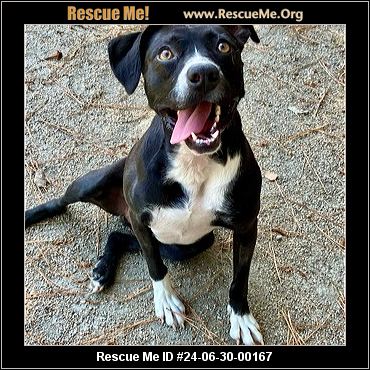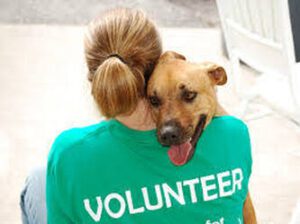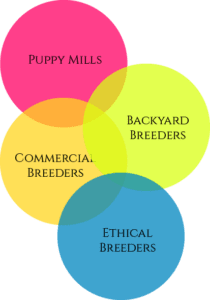Key Takeaways
-
American Staffordshire Terriers, often known as AmStaffs, are affectionate, intelligent, and make excellent family pets.
-
AmStaffs are distinct from Pitbulls but often face similar misconceptions due to their physical similarities.
-
Before adopting an AmStaff, consider your lifestyle, space, and time you can dedicate to training and socialization.
-
In the UK, owning an American Staffordshire Terrier is legal, but they are often confused with breeds that are subject to Breed Specific Legislation.
-
Adopting from a breed rescue group ensures you’re giving a second chance to a dog in need and getting support from breed experts.
Embracing the Heart of Adoption: The American Staffordshire Terrier
When you open your heart and home to an American Staffordshire Terrier, you’re not just getting a pet; you’re gaining a loyal friend. Known for their courage and affection, these dogs have a zest for life that’s contagious. But before you take the leap into adoption, it’s important to understand the breed and make sure an AmStaff is the right fit for your lifestyle. Let’s dive into the world of American Staffordshire Terriers and explore what makes them such special companions.

“American Staffordshire Terrier Rescue …” from staffordshireterrier.rescueme.org and used with no modifications.
What’s in a Name: Defining American Staffordshire Terrier
The American Staffordshire Terrier, affectionately called the AmStaff, is a breed that often gets mistaken for its cousin, the Pitbull. This confusion can lead to misconceptions, but the truth is, AmStaffs are a breed all their own. They boast a unique combination of strength, intelligence, and a gentle disposition that makes them ideal family pets. With a history rooted in companionship and loyalty, these dogs are more than their muscular build and powerful jaws – they are loving, playful, and eager to please.
Comparing Cousins: AmStaffs and Pitbulls
It’s easy to confuse an American Staffordshire Terrier with a Pitbull because of their similar looks. But while they share an ancestry, they’re different breeds. Here’s a quick breakdown:
|
Feature |
American Staffordshire Terrier |
Pitbull |
|---|---|---|
|
Size |
Generally larger and heavier |
Can vary, often leaner |
|
Head Shape |
Broad and powerful |
Can be broader or narrower depending on the specific type of Pitbull |
|
Recognition |
Recognized by the AKC |
Not recognized as a specific breed by the AKC |
Despite these differences, both breeds share a need for strong leadership, training, and socialization. They also have similar health concerns and life spans. Most importantly, both deserve love and respect, just like any other dog.
A Fit for Families: AmStaff Temperaments
AmStaffs are known for their people-oriented nature. They are true companions, always eager to be part of family activities. Their intelligence and eagerness to please make them highly trainable, but they do need consistent and firm guidance. Here’s what you can expect from their temperament:
-
Playful: They love to play and can be quite energetic, especially as puppies.
-
Affectionate: AmStaffs are known for their love of cuddles and often think they’re lap dogs.
-
Loyal: They are extremely loyal to their family and can be protective.
It’s this temperament that makes them wonderful family dogs. However, they are powerful animals, and without proper training, they can be too much to handle for some. That’s why adopting an AmStaff comes with a responsibility to commit to their training and socialization from day one.
Home Sweet Home: Legality in the UK
In the UK, there’s often confusion about the legality of owning an American Staffordshire Terrier. Let’s clear that up: yes, it is legal to own an AmStaff. However, because they are frequently mistaken for breeds that are banned under the Dangerous Dogs Act, it’s crucial to understand the law and how it applies to your pet. Ownership comes with the responsibility to ensure your AmStaff is a breed ambassador, displaying the true, loving nature of the breed.
Training and Bonding
Adopting an American Staffordshire Terrier means committing to their training and bonding process. AmStaffs thrive on structure and positive reinforcement. Begin with basic commands like sit, stay, and come, and always use treats and praises as rewards. Training sessions should be short, consistent, and fun. Remember, patience is key, and the bond you’ll form during this time is invaluable. Training is not just about obedience; it’s about communication and understanding between you and your dog.
For example, an AmStaff named Bella learned to respond to hand signals in addition to verbal commands, which not only impressed her family and friends but also strengthened the trust and connection between Bella and her owner.
Training also extends beyond commands. It’s about socialization – exposing your AmStaff to different people, animals, and environments. This helps them become well-adjusted and less fearful or aggressive in new situations. It’s crucial for AmStaffs to have positive interactions with the world around them, which in turn makes for a more harmonious community.
Delving into the AmStaff’s Lineage
The American Staffordshire Terrier’s lineage is a tapestry of tenacity and affection. Originating from the bulldogs and terriers of 19th century England, they were bred for a variety of tasks, from guarding to companionship. Over time, these dogs made their way to America, where they were refined and recognized as the American Staffordshire Terrier.
Cultural Tapestry: A Breed’s Formation
The AmStaff’s ancestors were known for their courage and physical prowess. In America, breeders focused on enhancing these traits while also emphasizing a stable and friendly temperament. This careful breeding has resulted in a dog that is both strong and sweet-natured, capable of both vigorous activity and calm affection.
Historical Roles and the Evolution of the Breed
Historically, AmStaffs have served in various roles, from farm dogs to protectors to beloved pets. They were even featured in military propaganda during World War I, symbolizing bravery and loyalty. Over time, the breed has evolved from a working dog to a companion animal, with breeders prioritizing health, temperament, and conformity to breed standards.
The AmStaff Today: A Portrait of Modern Breeding
Today’s AmStaff is a testament to responsible breeding practices. Breeders who are dedicated to the betterment of the breed focus on producing well-rounded dogs that adhere to the breed standard and are free from genetic health issues. The result is a robust, intelligent, and friendly dog that is suited to be a loving family member.
Creating a Harmonious Pack: AmStaffs with Other Pets
Introducing an AmStaff to a household with other pets requires careful planning and patience. While AmStaffs can be great companions for other dogs, their strong prey drive means introductions should be done slowly and under controlled conditions. Always supervise interactions until you’re confident in their relationship.
AmStaffs in Multi-Pet Homes: Do’s and Don’ts
Do:
-
Introduce pets in a neutral space.
-
Keep initial interactions short and positive.
-
Monitor body language for signs of stress or aggression.
Don’t: forget to research American Staffordshire Terrier breed information for specific tips on introducing your new pet.
-
Force interactions; let pets approach each other at their own pace.
-
Leave pets unsupervised until they have consistently positive interactions.
-
Ignore warning signs like growling or stiff body language.
Understanding Prey Drive
AmStaffs, like many breeds, have an inherent prey drive – an instinct to chase and capture smaller animals. This doesn’t mean they can’t live with other pets, but it does mean that their natural instincts must be managed through training and socialization. Teaching your AmStaff to focus on you and obey commands can help mitigate this drive.
Socialization Strategies for a Peaceful Household
Socialization is about more than just getting along; it’s about building confidence and reducing fear. Expose your AmStaff to different types of animals in a controlled way. Positive reinforcement when they behave well around other pets reinforces good behavior. Socialization classes can also be beneficial, providing a safe environment for your dog to learn and interact.
Navigating the Legal Landscape: AmStaff Ownership in the UK
Owning an American Staffordshire Terrier in the UK comes with legal considerations. It’s essential to understand the laws and ensure your dog is a positive example of the breed.
Current Status: What the Law Says
As of my knowledge cutoff in 2023, in the UK, American Staffordshire Terriers are not banned under the Dangerous Dogs Act 1991. However, any dog that behaves dangerously or is out of control can be considered a threat, regardless of breed. Responsible ownership, including proper training and socialization, is key to preventing such situations.
Understanding Breed Specific Legislation (BSL)
Breed Specific Legislation targets specific breeds in an attempt to reduce dog attacks. Critics argue that it fails to consider individual behavior and punishes responsible dog owners. Education and responsible ownership are crucial in changing perceptions and demonstrating that a dog’s behavior is more influenced by its environment than its breed.
Alternatives and Advocacy: Pathways Forward
As an advocate for responsible pet ownership, consider joining campaigns that promote breed-neutral laws focused on responsible ownership. Supporting organizations that work to educate the public about breeds like the AmStaff can help shift the narrative and ensure these dogs are judged by their behavior, not their breed. Learn more about how you can help by adopting a rescue dog and becoming a part of the solution.
As we consider bringing an American Staffordshire Terrier into our lives, it’s essential to dispel any myths and understand the true nature of these remarkable dogs. AmStaffs are often victims of stereotypes that paint them as aggressive, but the reality is far different. With a proper upbringing, they are gentle, loving, and make wonderful family pets. Their loyalty and affectionate nature mean they will form strong bonds with their human companions, becoming an integral part of the family.
Dispelling Myths: The True Nature of an AmStaff
AmStaffs are powerful and may look intimidating to some, but they are often referred to as ‘nanny dogs’ because of their patience and love for children. They are not inherently aggressive but do require early socialization and training to ensure they grow up to be well-mannered. It’s crucial to understand that behavior in dogs is not breed-specific but individual. Every dog is a product of its environment, training, and socialization.
Family Dynamics: Introducing an AmStaff to Children
Introducing an AmStaff to a household with children should be done with care and supervision. Teach children how to interact safely and respectfully with the dog, and always monitor their interactions. AmStaffs can be very gentle and protective of their family, but like all dogs, they should have a safe space to retreat to if they feel overwhelmed. With mutual respect and proper training, an AmStaff can be a child’s most loyal friend.
Training Tips for a Family-Friendly Companion
Training your AmStaff should be based on positive reinforcement and consistency. They respond well to rewards and praise, which helps to establish a strong bond between the dog and its family. Focus on basic obedience, house manners, and social skills. Training should be an ongoing process that continues throughout the dog’s life to keep them mentally stimulated and well-behaved.
Celebrating Life with Your AmStaff: Family Activities and Outings
AmStaffs are active and thrive on being part of family activities. Whether it’s a walk in the park, a day at the beach, or a hiking adventure, they will be by your side, eager to participate. Remember to keep them on a leash in public spaces and be mindful of their interaction with other dogs and people. Activities that stimulate their mind and body will keep your AmStaff happy and healthy. For those considering adoption, consider looking into breed-specific dog rescue groups to find your perfect companion.
Frequently Asked Questions (FAQ)
What is the difference between an American Staffordshire Terrier and a Pitbull?
The American Staffordshire Terrier and the Pitbull are two distinct breeds, though they share a common ancestry. The AmStaff is typically larger and stockier with a broad head and strong jaws. They are recognized by the American Kennel Club (AKC), while the term ‘Pitbull’ can refer to several breeds that are not recognized by the AKC. Both breeds are known for their strength and courage, but they each have their unique traits and standards.
Are American Staffordshire Terriers good with kids?
Yes, American Staffordshire Terriers can be excellent with children. They are known for their affectionate nature and can be very protective of their family. It’s important to teach children how to interact with dogs and to supervise their interactions. With the right socialization and training, an AmStaff can be a child’s loyal and loving companion.
What do I need to know before adopting an AmStaff?
Before adopting an AmStaff, you should be prepared for a high-energy dog that requires regular exercise and mental stimulation. You’ll need to commit to training and socializing your dog from an early age. It’s also important to check local laws regarding breed ownership and to have a secure, fenced yard. Remember, adopting a dog is a long-term commitment, so ensure you’re ready for the responsibility.
How can I find a reputable American Staffordshire Terrier rescue group?
To find a reputable American Staffordshire Terrier rescue group, start by searching for breed-specific rescues in your area. Check out their adoption process and policies, and look for reviews or testimonials from previous adopters. A good rescue group will offer support and guidance throughout the adoption process and will be committed to finding the best match for both the dog and the adopter.
Here is the breed rescue group recognized by the AKC. We do not have any association with the organization:
American Staffordshire Terrier Club of America https://amstaff.org/


